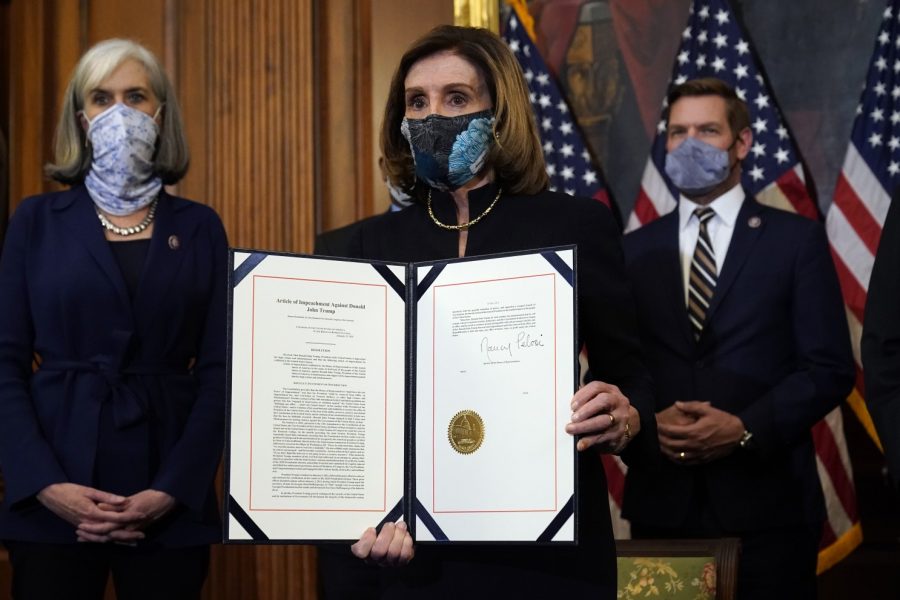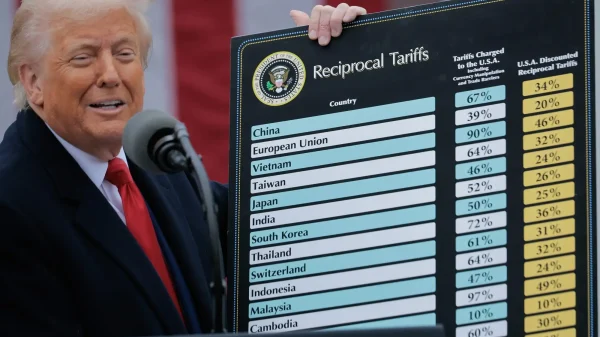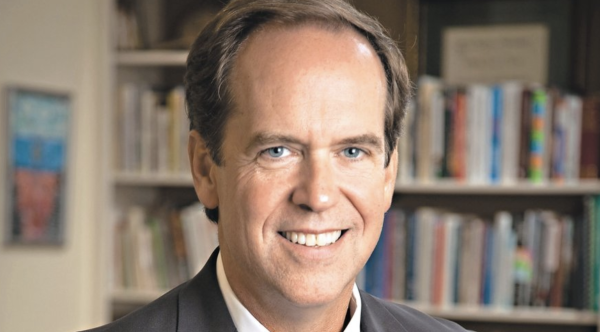Westminster students and faculty react to former President Donald Trump’s second impeachment
On Jan. 13, 2021, the House of Representatives voted to impeach former President Donald Trump, making him the first president in the history of the United States to be impeached more than once. The impeachment process took place during President Joe Biden’s transition to power.
The United States Constitution states that the House of Representatives has the sole power of impeachment, and the Senate has the ability to try all impeachments. Through the impeachment process, Congress may charge and then try an official of the federal government for treason, bribery, or other high crimes and misdemeanors.
The Constitution requires a two-thirds vote of the Senate to convict the impeached official; the penalty for conviction is removal from office and the disqualification of holding public office in the future. Since 1789, roughly half of the Senate’s impeachment trials have resulted in conviction and removal from office. Only two other U.S. presidents have been impeached: Andrew Johnson and Bill Clinton. However, neither of the former presidents were convicted.
“I think that the interesting thing about this event is the idea that you could impeach a former officeholder to prevent them from holding future office,” said Upper School history teacher Brooks Batcheller. “Impeaching this president has been very different because most of the time, presidents are all too happy to be done with the elected office once they have completed their time in office, whether it’s following one term or two.”
The House of Representatives approved a single article of impeachment, charging former President Donald Trump with “incitement of insurrection” following the riots at the U.S. Capitol.
On Jan. 6, rioters who claimed to support Donald Trump gathered at a rally organized by Trump supporters to challenge the result of the 2020 presidential election. The rally took place on the National Mall in Washington, D.C. As Trump finished speaking to the crowd, his supporters stormed the nearby Capitol, where Congress members met to count the electoral votes certifying Joseph Biden’s election to the presidency. Those in the building, including former Vice President Mike Pence, had to hide to protect themselves from the rioters. Seven people died during the riot or due to reasons related to the riot, including three police officers.
Donald Trump’s impeachment has sparked debates throughout the country. Some question whether or not Trump did hold responsibility for inciting the insurrection.
“During the course of his remarks, Mr. Trump did say ‘peacefully and patriotically protest.’ I think we can take his words at face value,” said Young Conservatives faculty advisor George Berry. “That was what he wanted. A peaceful and patriotic protest. Some people took his words and did what they did. I don’t know if that can really be blamed on Mr. Trump.”
During the trials, Trump’s defense team capitalized on the language of the line “peacefully and patriotically make your voices heard.” They specifically highlighted this part of Trump’s speech to demonstrate that he never incited the crowd.
There is also the question of whether or not it was constitutional to impeach Donald Trump, as the impeachment trial lasted after he had been removed from office.
“I do think that it was constitutional to impeach Donald Trump,” said Young Democrats leader Lucy Hager. “I think if the impeachment process had been started after he left office, I wouldn’t be so sure about it being constitutional. But since the House of Representatives actually impeached him, filed, and passed the articles of impeachment while he was still sitting in office, I would consider it constitutional. It’s definitely a gray area, but I think it’s okay since he was still in office when the process started.”
On Feb. 9, the Senate voted on whether holding the impeachment trial of Trump was constitutional, as he no longer held the presidential office. The vote was 56 to 44, with six Republicans voting to impeach along with all 50 Democrats. These Republican senators were Bill Cassidy of Louisiana, Pat Toomey of Pennsylvania, Mitt Romney of Utah, Susan Collins of Maine, Ben Sasse of Nebraska, and Lisa Murkowski of Alaska. These votes allowed the Senate to move forward with the rest of the impeachment process.
On Feb. 13, the Senate voted on the charge. Two-thirds of the Senate, or 67 votes, was needed to convict former President Donald Trump of inciting an insurrection. A majority of senators voted to convict Trump but not enough to meet the threshold, resulting in Trump’s acquittal. In total, 57 senators voted to convict Trump, including seven Republican senators.
The acquittal of former President Donald Trump marked the end of the Trump presidency. However, by not convicting him and, in turn, prohibiting him from public office, the Senate has enabled Donald Trump to run for future offices.





